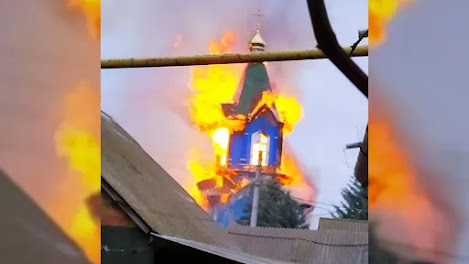Protaton Icon ~ Christ's Descent into Hades ~ 14th c
In the Sunday Creed we profess,/ "He descended into hell" — the underworld of the dead/ and lifted us up into life./ In the Eastertime/ may we know ourselves to be escorted out of hardness of heart/ and yanked up by Christ into the kind love of God./ We pray to the Lord.
Since the invasion of Ukraine began on February 24,/ many towns and cities have been completely destroyed./ Mass graves are being discovered./ Many more people are dying from lack of water,/ food and medical care./ Nothing is spared./ Even schools,/ libraries,/ hospitals,/ nurseries,/ apartment complexes,/ parks and forests are bombed and burned./ We pray boldly for God to intervene./ We pray to the Lord.
In the Easter Season may we not be confused or waylaid Christians,/ but understand and embrace the Gospel of Jesus in its essentials:/ humility,/ repentance,/ gratitude,/ justice,/ kindness,/ hospitality,/ forgiveness and service./ We pray to the Lord.
There are currently dozens of major and lesser wars,/ conflicts,/ clashes and skirmishes taking place around the world/ claiming many thousands of lives./ War is anti-spiritual./ War is loss,/ waste and degradation./ Even the animals,/ plants,/ water,/ air and soil pay the price./ We pray for our conversion./ We pray to the Lord.
We pray for those who are injured by disaster,/ accident or violence./ For the sick,/ the terminally ill/ the people who are sleepless,/ over-worked,/ under-paid,/ in chronic pain,/ depression or fear./ We pray to the Lord.
Earth Day and Arbor Day were observed during the Month of April./ Grant us something of the mind of God/ who created this planet in loving imagination./ Bless those who actively care for the earth,/ the tree-planters,/ gardeners,/ farmers,/ foresters,/ botanists,/ ecologists,/ teachers and scientists whose work advances respect and stewardship for the earth./ We pray to the Lord.























